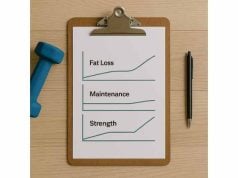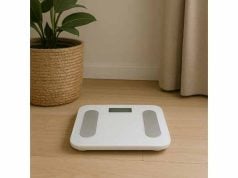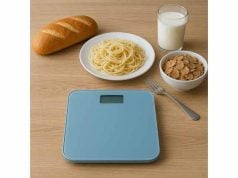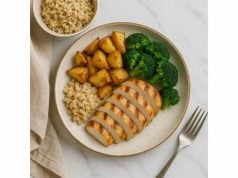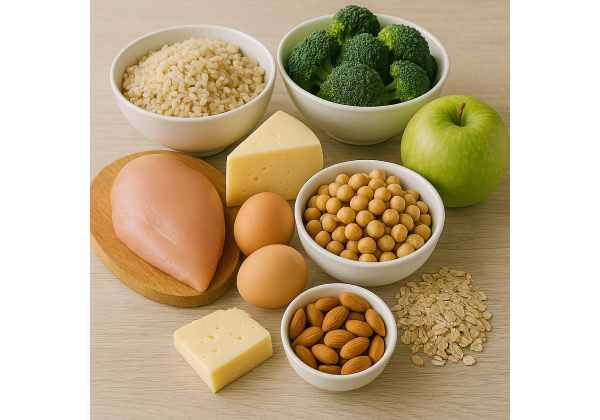
Maintenance is not a holding pattern; it is a skill. The right mix of protein, carbs and fats steadies appetite, preserves strength, and protects the fat loss you worked for. This guide shows you how to set your numbers, build meals that keep you full, and adjust when life changes. You will see clear ranges, real examples, and simple rules that survive busy weeks. If you are still unsure whether you are in maintenance or stuck in a stall, start with our concise plateau and maintenance troubleshooting guide to confirm your baseline before you dial in macros.
Table of Contents
- Maintenance macros explained
- How to set your numbers
- Protein, carbs and fats by goal
- Build meals that keep you full
- Adjust when hunger or energy dips
- Special cases: training, midlife and meds
- Track, test and stay consistent
- FAQ
Maintenance macros explained
Maintenance macros are the protein, carbohydrate and fat targets that line up with your maintenance calories—your total daily energy needs averaged over a typical week. When those calories and macros match real life, you maintain a stable body weight within a narrow band while feeling satisfied, sleeping well, and training with intent.
Why macros at maintenance matter:
- Appetite control: Protein and fiber promote fullness. Balanced fats and carbs keep meals satisfying without runaway calories.
- Body composition: Enough protein maintains muscle. Carbs support training. Fats support hormones and fat-soluble nutrient absorption.
- Predictability: Clear targets remove guesswork and help you spot real drift versus normal day-to-day scale changes.
Calories set the boundary; macros shape how you feel within it. Two people can eat the same calories yet experience very different hunger and energy because their macro split differs. Maintenance macros give you the levers to steady appetite without micromanaging every bite.
A simple way to think about it:
- Protein: the anchor. Aim high enough to maintain lean mass, especially if you lift.
- Carbs: the throttle. Dial up for endurance and high-volume training; dial down if your day is mostly sedentary.
- Fats: the stabilizer. Keep a sane floor for hormones and meal satisfaction; fill remaining calories after protein and carbs.
Common ranges at maintenance (choose the end that fits your training and preferences):
- Protein: 1.4–2.2 g/kg/day (0.6–1.0 g/lb). Distribute across meals—25–40 g per meal.
- Fat: 0.6–1.0 g/kg/day (0.27–0.45 g/lb) as a floor, then adjust to taste.
- Carbs: fill the rest. For reference, many active people land around 3–5 g/kg/day; lighter training or desk-heavy days might sit near 2–3 g/kg.
What if you prefer higher fat or lower carbs? You can shift within reason as long as protein is covered and fats do not drop below the floor. The “best” split is the one you can repeat on normal weekdays and through weekends.
If you need a refresher on calorie balance before you set macros, skim our clear primer on weight loss fundamentals. Understanding intake and output will make your macro decisions easier.
Key takeaway: Maintenance macros translate maintenance calories into meals you enjoy and can repeat. When your split fits your routine, hunger calms and the scale stops drifting.
How to set your numbers
There are two parts: estimate maintenance calories, then assign protein, fats and carbs. Keep it practical and data-driven.
Step 1 — Estimate maintenance calories.
Pick one method and verify over two weeks.
- Recent-history method: If you have two to four weeks of intake data with stable weight, average those calories. That is your current maintenance.
- Rule-of-thumb method: Multiply body weight by 14–16 (lb) or use 30–35 kcal/kg. Smaller or less active frames start lower; larger or more active frames start higher.
- Activity-aware method: Add 80–120 kcal per 2,000–2,500 steps above 5,000. Add 150–300 kcal per 45–60 minutes of purposeful training.
Whichever you choose, verify. Weigh daily on waking, then compare the first 7-day average to the second. If weight rises > 0.2–0.3% across two weeks, you overshot; if it falls similarly, you undershot. Adjust by 100–150 kcal and repeat. For a deeper walkthrough, see how to find your maintenance calories without rebound.
Step 2 — Set protein.
Choose 1.6–2.2 g/kg (0.7–1.0 g/lb). Leaner, highly active, or strength-focused athletes sit toward the top. Older adults (> 40–50) benefit from the higher end to counter anabolic resistance. Distribute across 3–5 meals with 25–40 g per meal.
Step 3 — Set a fat floor.
Pick 0.6–0.8 g/kg if you are carb-leaning or train with higher intensity; pick 0.8–1.0 g/kg if you prefer richer meals or have lower carb needs. Ensure at least 20–25% of calories come from fat on average.
Step 4 — Fill remaining calories with carbs.
Convert protein and fat grams to calories (protein 4 kcal/g, carbs 4 kcal/g, fat 9 kcal/g). Subtract from maintenance calories; divide the remainder by 4 to get carb grams. Adjust around training days as needed.
Worked example (metric):
- 75 kg person, 175 cm, lifts 3x/week, 8,000 steps/day.
- Estimated maintenance: 2,450 kcal.
- Protein: 1.8 g/kg → 135 g (540 kcal).
- Fat: 0.8 g/kg → 60 g (540 kcal).
- Calories left for carbs: 2,450 − (540 + 540) = 1,370 kcal → 343 g carbs.
Worked example (imperial):
- 165 lb person, similar activity.
- Maintenance ~ 2,450 kcal.
- Protein 0.8 g/lb → 130 g (520 kcal).
- Fat 0.35 g/lb → 58 g (522 kcal).
- Carbs: 2,450 − 1,042 = 1,408 kcal → 352 g carbs.
Step 5 — Sanity checks.
- Are you sleeping well and not ravenous at night?
- Is gym performance holding or improving?
- Is weight stable within ±0.5% week to week?
If yes, you are close. If hunger is high, shift 5–10% of calories from carbs to fat or add 8–12 g fiber through legumes and vegetables. If energy is low in training, move 20–40 g carbs toward pre-workout or dinner.
Bottom line: Translate calories to macros using protein first, fat floor, then carb fill. Verify in your logbook, not just in your head.
Protein, carbs and fats by goal
Macro ranges tighten when you consider training style, appetite patterns and body composition. Use these scenario-based ranges to land in a sweet spot.
If you lift 2–5 days per week (general strength):
- Protein: 1.8–2.2 g/kg.
- Carbs: 3–5 g/kg on training days, 2.5–4 g/kg on rest days.
- Fats: 0.6–0.8 g/kg as a floor.
This split preserves muscle, fuels lifts, and keeps meals satisfying without pushing calories too high.
If you run, cycle or do mixed conditioning:
- Protein: 1.6–2.0 g/kg.
- Carbs: 4–6 g/kg on higher-volume days; 3–5 g/kg otherwise.
- Fats: 0.6–0.9 g/kg.
Endurance leans on carbohydrate availability; keep fats moderate so carbs can flex up.
If your job is mostly sedentary, steps < 6,000:
- Protein: 1.6–2.0 g/kg for appetite control.
- Carbs: 2–3 g/kg baseline; add 20–40 g around any workouts.
- Fats: 0.8–1.0 g/kg to enhance meal satisfaction.
Higher fat here helps stability when carb demand is lower.
If you prefer lower carb eating:
You can push fat higher (0.9–1.2 g/kg) and reduce carbs accordingly while maintaining protein. Keep an eye on performance: if lifts stall or mood dips, bring 40–80 g carbs back around training windows.
If you are plant-based:
- Hit protein with tofu, tempeh, seitan, textured soy, edamame, legumes, and supplemental protein as needed.
- Combine sources (e.g., legumes plus grains) to cover amino acids.
- Protein target: 1.8–2.4 g/kg, then split carbs and fats per training needs.
If you are in your 40s and beyond:
Muscle retention and satiety respond well to the higher end of protein (~2.0–2.2 g/kg), plus 25–40 g per meal. Keep resistance training in place. For fluctuations related to hormones, pair macro consistency with recovery hygiene.
Two practical templates:
- Carb-forward training day
Protein 2.0 g/kg, fat 0.6–0.7 g/kg, carbs fill the rest. - Satiety-forward desk day
Protein 1.8–2.0 g/kg, fat 0.8–1.0 g/kg, carbs fill the rest.
If you are tracking body changes beyond the scale, see our quick guide to body recomposition metrics so you do not drop protein when measurements, not weight, are your priority.
Key idea: There is no single macro ratio for everyone at maintenance; there is a range that fits your training and preferences while keeping weight stable and appetite calm.
Build meals that keep you full
Numbers matter less if meals do not satisfy. Use these rules to convert your targets into plates you can repeat all week.
The 3–part plate
- Anchor protein (25–40 g): chicken, fish, lean beef, eggs, Greek yogurt, cottage cheese, tofu, tempeh, seitan.
- High-fiber volume: 2 fists of vegetables or fruit; include legumes or whole grains for extra fiber.
- Smart energy: potatoes, rice, oats, whole-grain pasta, quinoa, tortillas, olive oil, avocado, nuts in measured portions.
Fiber as a macro amplifier
Aim for 25–40 g/day from vegetables, fruit, legumes and whole grains. It improves fullness, meal satisfaction and blood sugar stability. Add 8–12 g at lunch and dinner if you notice late-night cravings.
Liquid calories and condiments
Use sauces and dressings deliberately. Measure oils and nut butters. Swap calorie-dense sauces for lower-calorie options when you want volume without overshooting.
Meal timing that helps appetite
Distribute protein evenly. If evenings are tough, shift 10–20 g protein and 20–40 g carbs to dinner or a pre-bed snack like cottage cheese with berries or a casein shake.
Two sample days (around 2,400 kcal, lift day):
- Breakfast: Greek yogurt parfait (300 g yogurt, berries, 30 g muesli), coffee.
- Lunch: Burrito bowl (150 g chicken, 150 g rice, beans, salsa, lettuce), apple.
- Snack: Protein shake, banana.
- Dinner: Salmon (150 g), potatoes (250 g), broccoli, olive oil drizzle.
- Optional snack: Cottage cheese (200 g) with cinnamon.
- Vegetarian:
Breakfast: Tofu scramble with vegetables, whole-grain toast.
Lunch: Lentil soup with side salad and olive oil.
Snack: Protein smoothie with soy milk and frozen berries.
Dinner: Tempeh stir-fry, rice, cashews measured.
Optional snack: Skyr or soy yogurt.
For extra fullness tactics that pair well with maintenance, see our straightforward strategies for high volume eating. High protein plus fiber-dense foods make hitting macros far easier.
Bottom line: Build repeatable plates with a protein anchor, fiber volume, and measured energy. Satiety is a design choice.
Adjust when hunger or energy dips
Maintenance should feel steady. If hunger spikes or workouts sag, make targeted changes rather than overhauling everything.
If hunger is high most evenings:
- Move 10–20 g protein and 8–12 g fiber to the final meal.
- Swap 150–200 kcal from daytime snacks into dinner.
- Raise fats by 10–15 g and reduce carbs equivalently if you prefer richer meals.
If you feel flat in training:
- Add 20–50 g carbs within three hours before lifting or to dinner the night before morning sessions.
- Keep sodium and fluids sufficient; low sodium can masquerade as fatigue.
- If performance does not rebound in two weeks, nudge total calories up 100–150 kcal.
If weight creeps up despite “maintenance”:
- Audit weekends and nights for untracked extras (oils, dressings, finishing bites).
- Trim 100–150 kcal from daily intake or add 1,000–2,000 steps.
- Hold changes for 14 days before judging.
If you are constantly thinking about food:
- Confirm sleep is 7–8 hours.
- Increase protein to the top of your range and add food volume via vegetables and potatoes.
- Consider a structured snack versus grazing.
If you just left a diet:
Appetite and water will swing. Keep macros steady for 2–3 weeks, maintain steps, and use consistent meal timing. If you need a number tune-up, use our guide on how to adjust calories and macros without restarting a diet.
Guardrails that prevent drift:
- Pre-decide a night snack or kitchen closed time.
- Keep a default lunch and default post-workout meal.
- Weigh and measure high-calorie add-ons (oils, nuts) for one week each month.
Bottom line: Tweak one lever at a time, then watch for two weeks. Clear cause-and-effect beats constant fiddling.
Special cases: training, midlife and meds
Your macro plan should adapt to context. These situations merit specific tweaks or professional input.
Shift work and irregular schedules
Anchor three protein feedings in your wake window (e.g., start, midpoint, before sleep), then place carbs around your most demanding hours. Keep fats moderate to prevent heavy meals from impairing sleep during daytime rest.
Perimenopause and midlife
Protein toward 2.0–2.2 g/kg, resistance training at least twice weekly, and a fiber-rich diet help counter changes in appetite and body composition. Carbs timed before training can improve energy. Expect normal water shifts across the cycle; judge by two-week trends.
High-volume endurance blocks
Increase carbs to 5–7 g/kg during peak weeks, keep protein at 1.6–2.0 g/kg, and hold fats near 0.6–0.8 g/kg. Use quick-digesting carbs around long sessions and fiber-rich choices the rest of the day.
Plant-based athletes
Hit protein targets with soy foods, seitan, legumes plus grains, and supplemental powders. Consider B12, iodine and iron status with your clinician. Keep fats from olive oil, nuts and seeds measured to protect calorie balance.
Medications that influence appetite or weight
Some prescriptions affect hunger, water retention or energy. If appetite changes make maintenance difficult, ask your clinician for options and timing strategies. For a checklist to discuss, review our overview of common medication culprits before your appointment.
Digestive considerations
If high fiber causes discomfort, spread intake, cook vegetables, choose lower-FODMAP options temporarily, and increase fluids. Do not force a fiber target that disrupts your day; gradual changes work better.
Bottom line: Your macros are living numbers. Match them to your phase of life, training load and health, and do not hesitate to involve a professional when variables stack up.
Track, test and stay consistent
Maintenance rewards consistency more than perfection. Use simple metrics and a light touch to confirm that your plan works.
Weekly rhythm
- Weigh daily on waking, then average for the week. Compare week-to-week, not day-to-day.
- Track waist or navel circumference weekly.
- Note training performance (reps, weights, pace) and step count averages.
Decision dashboard (review every two weeks)
- Weight stable within ±0.5%? Stay the course.
- Hunger acceptable most days? Keep macro split.
- Performance steady or rising? Carbs are likely right.
- If two or more are off, adjust 100–150 kcal or shift 20–40 g carbs toward training and 10–15 g fat toward satiety.
Lifestyle anchors
Keep two or three default meals that fit your macros without thought. Use a shopping list that supports those meals. This removes choice fatigue and prevents random grazing that slowly raises calories.
Month-end audit
Look at four weeks of averages. If weight drifted upward beyond 1%, trim small calories you do not notice (oils, drinks, treats) or add steps. If drifted downward and you did not intend it, raise 100–150 kcal from carbs or fats, keep protein constant.
Mindset check
Maintenance is not limbo; it is practice for the life you want. Your goal is a plan you can run through busy seasons, travel and weekends without constant vigilance.
Bottom line: Use averages, simple rules and small adjustments. That is how maintenance stays automatic.
FAQ
What is a good macro ratio at maintenance?
There is no single perfect split. Cover protein at 1.6–2.2 g/kg, set a fat floor around 0.6–1.0 g/kg, then give carbs the remaining calories based on activity. Start there for two weeks, monitor hunger and performance, and shift slightly as needed.
Do I need as much protein at maintenance as during fat loss?
Often yes, especially if you lift or are over 40. Aim for 1.8–2.2 g/kg and spread it across meals with 25–40 g each. Higher protein stabilizes appetite, preserves muscle, and makes maintenance more predictable even when training varies.
How many carbs should I eat if I train three days per week?
Most lifters do well with 3–5 g/kg on training days and 2.5–4 g/kg on rest days, keeping protein steady. Move 20–40 g toward the meal before training or dinner the night prior to morning sessions to support performance.
What fat intake supports hormones without hurting satiety?
Keep fat at 0.6–1.0 g/kg as a floor, which typically covers essential fatty acids and meal satisfaction. Prefer olive oil, avocado, nuts and seeds in measured portions. If meals feel hollow, add 10–15 g fat and trim carbs equivalently.
How do I know if my maintenance macros are working?
Check two-week averages: body weight within ±0.5%, steady waist measurement, normal hunger, and stable or improving workouts. If two or more drift the wrong way, adjust 100–150 kcal or shift carbs and fats around training and evening meals.
Can I cycle carbs at maintenance?
Yes. Many people keep protein constant, then raise carbs on harder training days and lower them slightly on rest days, holding total weekly calories similar. Keep the swings modest and evaluate performance and appetite rather than chasing big day-to-day changes.
References
- Dietary Guidelines for Americans, 2020–2025: Understanding the Scientific Process, Guidelines, and Key Recommendations — 2021 (Guideline)
- Athletes’ nutritional demands: a narrative review of nutritional requirements — 2024 (Narrative Review)
- A systematic review, meta-analysis and meta-regression of the effect of protein supplementation on resistance training-induced gains in muscle mass and strength in healthy adults — 2018 (Systematic Review & Meta-analysis)
- How much protein can the body use in a single meal for muscle-building? Implications for daily protein distribution — 2018 (Review)
- Dietary protein and appetite sensations in individuals with overweight and obesity: a systematic review — 2020 (Systematic Review)
Disclaimer
This article is for general education. It is not medical advice and does not replace care from a qualified clinician or registered dietitian. If you have a medical condition, use medications that affect appetite or weight, or notice disordered eating patterns, seek personalized guidance before changing your diet.
Share and follow
If this guide helped, please share it with a friend who is learning maintenance. For practical updates and simple templates, follow us on the social platform you use most—Facebook, X (formerly Twitter), or another network you prefer.


